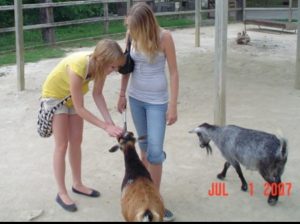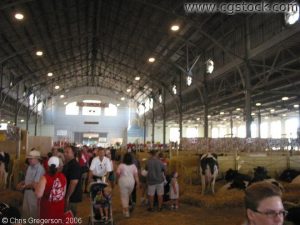The Minnesota State Fair has been connected to an outbreak of an E. coli strain, according to the Minnesota Department of Health (MDH).
 To date, disease doctors have identified 11 cases of E. coli 0157 among Minnesotans who were at the State Fair between Aug. 25 and Sept. 2. All of them fell ill between Aug. 29 and Sept. 6.
To date, disease doctors have identified 11 cases of E. coli 0157 among Minnesotans who were at the State Fair between Aug. 25 and Sept. 2. All of them fell ill between Aug. 29 and Sept. 6.
Ages of those sickened range from 2 to 43 years old. Six of the cases required the patient to be hospitalized, including one person developing hemolytic uremic syndrome, which the MDH says is a potentially fatal complication.
One person is still in a hospital being treated.
Investigators are working to determine the source of the outbreak, with evidence so far indicating that it most likely began with contact with livestock.
Most of the 11 patients visited the Miracle of Birth exhibit and made physical contact with calves, goats, sheep or piglets, but others suffering from the E. coli strain did not make direct contact with animals, leading the MDH to consider the possibility that those people made contact with contaminated surfaces.
 “This serves as a strong reminder to always wash your hands after being around livestock and their enclosures,” the MDH says.
“This serves as a strong reminder to always wash your hands after being around livestock and their enclosures,” the MDH says.
Fortunately, there is “little chance” of ongoing exposure to the strain since the fair has ended.
Erdozain G, Kukanich K, Chapman B, Powell D. 2012. Observation of public health risk behaviours, risk communication and hand hygiene at Kansas and Missouri petting zoos – 2010-2011. Zoonoses Public Health. 2012 Jul 30. doi: 10.1111/j.1863-2378.2012.01531.x.
Observation of public health risk behaviors, risk communication and hand hygiene at Kansas and Missouri petting zoos – 2010-2011Outbreaks of human illness have been linked to visiting settings with animal contact throughout developed countries. This paper details an observational study of hand hygiene tool availability and recommendations; frequency of risky behavior; and, handwashing attempts by visitors in Kansas (9) and Missouri (4), U.S., petting zoos.
Handwashing signs and hand hygiene stations were available at the exit of animal-contact areas in 10/13 and 8/13 petting zoos respectively. Risky behaviors were observed being performed at all petting zoos by at least one visitor. Frequently observed behaviors were: children (10/13 petting zoos) and adults (9/13 petting zoos) touching hands to face within animal-contact areas; animals licking children’s and adults’ hands (7/13 and 4/13 petting zoos, respectively); and children and adults drinking within animal-contact areas (5/13 petting zoos each). Of 574 visitors observed for hand hygiene when exiting animal-contact areas, 37% (n=214) of individuals attempted some type of hand hygiene, with male adults, female adults, and children attempting at similar rates (32%, 40%, and 37% respectively). Visitors were 4.8x more likely to wash their hands when a staff member was present within or at the exit to the animal-contact area (136/231, 59%) than when no staff member was present (78/343, 23%; p<0.001, OR=4.863, 95% C.I.=3.380-6.998). Visitors at zoos with a fence as a partial barrier to human-animal contact were 2.3x more likely to wash their hands (188/460, 40.9%) than visitors allowed to enter the animals’ yard for contact (26/114, 22.8%; p<0.001, OR= 2.339, 95% CI= 1.454-3.763).
Inconsistencies existed in tool availability, signage, and supervision of animal-contact. Risk communication was poor, with few petting zoos outlining risks associated with animal-contact, or providing recommendations for precautions to be taken to reduce these risks.





